1911 Flanders Twenty 4 Passenger Touring 4 Cylinder Convertible Barn Find
- Price:
- Make: Other Makes
- Model: Flanders Model
- SubModel: Twenty
- Type: Convertible
- Trim: red
- Year: 1911
- Mileage: 12,000
- Color: Red
- Engine size: 4 Cylinder
- Number of cylinders: 4
- Fuel: Gasoline
- Transmission: Manual
- Drive type: RWD
- Interior color: Black
- Options: Convertible, Leather Seats
- Vehicle Title: Clear
- Location: Boulder City, Nevada, United States
Description
The Garage Find of the year!!!
An all original Flanders Twenty, built in 1911
The car is in pristine condition for being 105 (yes, hundred and five) years old.
NOTHING 'S MISSING, HUNDRED PERCENT ORIGINAL AND ALL THERE.
We believe it had a professional repaint over time and that was done very well.
The interior seems to be original as far as we can check it, as well as all the rest on the car.
Motor has not been started since the last 10 years, but turns over by hand and seems to be ready to fire her up.
Obviously after a serious mechanic looked at it and cleaned the fuel tank, lines etc. (you know the drill)
We got tons of pictures if you like to receive them, we did 't touch the car because of the character it has like it sits in the garage, therefor we will not clean it up or detail it.
In other words, we leave it like we found it.
Soft Top Is Included as well as the bars and some (original?) tools.
Feel free to call me for more info, pictures, FaceTime call, I am here to help. 702 290 1299
The Flanders Twenty is located in Boulder City NV (89005), we are more than willing to help with shipping it world wide, nation wide, state wide...
SOME HISTORY IF YOU LIKE TO READ ALL ABOUT IT
MOTOR—20 horse-power. Four cylinders, cast en bloc—following best European and American practice in motors of these dimensions. It is universally agreed among automobile engineers that the two bearing crank shaft is not only sufficient, but for many reasons superior to the three bearing type in motors the cylinder bore of which is less than 95 millimeters (about 3-3/4 inches). In motors with cylinder bore exceeding the above dimensions all designers are unanimous in prescribing three bearing crank shafts—which is to say cylinders cast in pairs instead of en bloc. In this regard Flanders "20" and its mate, E-M-F "30," represent the two types and both follow the best practice in this regard.
BORE—3-5/8". Stroke, 3-3/4".
CRANK SHAFT—Drop forged steel, heat treated to procure rigidity and elasticity. Extra long, liberal bearings. Diameter of pins 1-7/8"—extra heavy for motor of this bore, insuring a large factor of safety. All bearing surfaces are ground to micrometrical exactness—half a thousandth of an inch. Crank shaft is offset from center line of cylinders—gives more power and insures longer life to motor because of reducing wear on walls of cylinders and pistons. It's a detail of design heretofore unknown in cars of less than $2,500—except E-M-F "30" which also possesses this feature.
VALVES—All on one side in accordance with best practice. Extra large in proportion to cylinder dimensions, insuring maximum power and perfect cooling qualities. Mechanically operated and interchangeable. Correct cam design and "roller effect" design of valve lifters affords silent action and smooth running of motor.
CAM SHAFT—Drop forged from special steel with all cams integral—similar to E-M-F "30" which set the standard in this regard. Not only are all bearing surfaces ground but cam contours also are ground after hardening. This operation, done on a machine of our own design, insures absolute uniformity in the power of all motors—it is not possible for any two to vary as much as one per cent. Valve action is rhythmic; and it is impossible for any cam to become displaced or to be set wrong.
BEARINGS—Cam shaft and piston pin bearings, phosphor bronze. Crank shaft bearings, special die-cast white-metal alloy—same as is used in cars selling at $4,000 to $6,000. In a car designed for utility as well as pleasure driving, and which therefore will be in constant service, it is necessary to use a better metal than might be serviceable in a car that is driven and cared for by a mechanic. Bearings as well as all other parts of Flanders are calculated to stand up under constant, hard usage.
CONNECTING RODS—Drop forged from special steel in "I-beam" cross section. Wrist-pin bearings exceptionally large and long and of marine type. Bearings, die cast white metal; shims provided for adjustment which is easily made through hand holes in bottom of crank case.
PISTONS—Cast from sane. metal as cylinders in our own foundries. Are extra long, insuring silent running and long life. Ground to absolute accuracy of micrometer gauge and each piston is fitted with four rings.
PISTON RINGS—Eccentric type; ground on periphery face to conform to cylinder when depressed; also ground on both sides. Design and finish of piston rings insures fall compression at all tunes—the longer they wear the better the compression.
MECHANICAL BALANCE—As in E-M-F "30"—not only are fly wheels balanced at high speed; crank shafts balanced; but each set Of pistons with connecting rods attached are weighed and made to balance to a fraction of an ounce. Thus is vibration in the motor wholly eliminated and wear of reciprocating parts reduced to a minimum.
GEARS—Camshaft gears are of the spiral type instead of spur gears ordinarily used in medium or low priced cars. The difference is in the silent running of the spirals and the better valve action. First cost a little more—but the results more than offset this.
LUBRICATION—Same principle as E-M-F "30"—vacuum feed oiler having no moving parts and consequently impossible to disarrange. Cannot flood nor starve the motor—oil level always the same regardless of road levels, speed of motor, or any other conditions. Simplest ever devised—and absolutely perfect in operation. No adjustments—just, keep oil in reservoir, screw cap down tight and let it alone. Oil ducts lead to all bearings and pistons are lubricated by splash from reciprocating parts.
IGNITION—Dual system, consisting of (a) Splitdorf magneto—same as E-M-F "30" of which at this writing there are nearly 12,000 in daily use and not a complaint; (b) a set of dry cell batteries are supplied for contingency use. These are unnecessary as the magneto is absolutely certain in action and so simple it cannot get out of order unless tampered with. Motor is easily started on magneto as on batteries, but American users are not yet educated to the point of confidence in a magneto—perhaps because there are so few reliable ones—so we furnish file batteries as a concession to popular demand.
COIL—Instead of following the present convention, which had its inception in the early days when coils were indifferently made and uncertain in action, requiring frequent adjustments necessitating its presence on the dash where the driver could the more easily fuss with it, the coil of Flanders "20" is incased in a hard-rubber cylindrical case and is placed beside the magneto. Here it is protected from the elements and its proximity to the source of ignition simplifies and shortens the wiring system, reducing chance of short circuits from broken wires or moist connections such as occur during rain or snow when coil is on the dash. This is a feature that will be widely imitated within a year—see if it isn't.
CARBURETOR—Is of the approved float feed type similar to that on E-M-F "30" and like the latter is of our own design and manufacture. It differs in details, however, being specially designed for this motor.
EXHAUST MANIFOLD—Is cast integral with cylinders—a feature hitherto known only in high priced foreign cars. Cooling ribs are cast on outer surface and inner surface is water-jacketed. Intake ports are below valve chambers and connection from carburetor is through Y-pipes.
COOLING—Motor is water cooled, the jackets being extra large, insuring good circulation and a plentiful supply of water under all conditions. Water jackets surround valve ports also. Circulation is maintained by a centrifugal pump of liberal proportions and simple design, driven from magneto shaft. Pump and magneto are attached to large tubes which support motor and either can be quickly detached without disturbing any other part.
CLUTCH—Is of the reversed cone type—leather faced—the type that has outlived all the "multiple disc" and other fads and which, in its presently highly developed form, is rapidly supplanting all others. Steel springs between leather and metal spider enable the driver to gently engage clutch so that the car starts without perceptible jar or effort.
SUSPENSION—Motor suspension is on the three-point principle, though effected in a manner slightly different from any other. Arms cast integral with rear end plates carry rear end of motor while front end is carried in cast support in such a manner as to permit sufficient revolving action to relieve all road strains.
UNIT ASSEMBLY—Perhaps the most original and the most striking feature of design in this car is the method by which several major features are incorporated in one unit. This accomplishes the dual purpose of simplifying manufacture—thus greatly reducing cost and consequently selling price—and makes it possible to readily replace the entire unit with another in the space of a few minutes—five at most. Motor, magneto, radiator, pump, carburetor, steering gear and dash are all carried on a sub-frame consisting of two parallel steel tubes. These tubes in turn are supported on cross members and secured by four bolts. By the removal of these bolts the entire unit can be quickly lifted from the chassis and another unit substituted. Of course every part is absolutely interchangeable. We expect this feature to revolutionize present garage practice which necessitates laying up the car for days at a time while some minor repair is being made. In case of any repair or replacement in a Flanders "20," however serious or simple, the easiest way is to replace the entire unit, send the owner away rejoicing with his car and then, when time best suits and with parts most accessible, make the necessary repair at a minimum of time and expense. The original unit may later be replaced in the car—or if the condition, as to wear, of the two units are about the same the change need not be made—the owner simply charged for time and material in making his unit good.
RADIATOR—Is of the McCord type. Being flexibly supported on the tubular sub-frame the radiator is not subjected to the twisting strains of rough roads. This fruitful cause of leaky radiators is therefore eliminated. The design is of "classy" contour and radiation surface is procured by making it of liberal width instead of excessive thickness. This gives the car a larger appearance from the front than any other car of similar power and size and takes it entirely out of the class of "cheap looking" cars. An original feature of this radiator is in the fact that the stamped sheet metal frame, instead of being rigidly soldered to the tubes, is simply a jacket easily detachable. This makes it easy to repair any leak that may through accident, occur in the circulation system and reduces that item of cost for radiator repairs which always has been excessive.
REAR AXLE—Is similar in design and construction to that of E-M-F "30" which set a pace in manufacturing and has proven so satisfactory to owners—so disappointing to competitive makers. Right and left housing sections are drawn from steel and no malleable castings enter into its construction. Brake drums and spring supports use steel stampings. Hyatt roller bearings carry the load at the wheels and ball bearings take driving and end thrusts at differential ends of axle shafts. Wheels are keyed and locked on tapered ends of shafts.
TRANSMISSION—As in E-M-F "30" the transmission is incorporated in the rear axle—the ideal construction for cars of light or medium weight. This confines the operating mechanism to two units and affords a maximum of flexibility in the chassis. Owing to the use of drawn and stamped steel where others use heavy and uncertain malleable castings, this construction is lighter with transmission included than other axles of same size not so constructed. A frame of crucible cast steel carries the two trains of gears and is bolted between the drawn axle sections. Stamped steel plates at the sides are easily removable so as to fully expose the gears to enable inspection and accurate adjustment under running conditions—a detail wherein this car surpasses all others and again sets a new standard. Transmission is of the semi-selective type affording two speeds forward and reverse. More than two speeds would of course be superfluous in a car of this weight (1200 pounds) and 20 horse-power. Gear ratio on direct is four-to-one, and on first speed, which is about the same ratio as intermediate gears on three-speed design, the car will start anywhere without effort and climb anything the tires can hold. Gears are made from drop forged blanks, of special nickel alloy steel and are cut and heat treated in our own factory—of course. All shafts are ground, as are also all gear centres, insuring perfect alignment and silent running.
OPERATION AND CONTROL—As this car is designed for the use of owners and will probably seldom be driven by skilled chauffeurs, every effort has been made to simplify the control and make every part "fool proof." This has been accomplished to a degree never before attained in a sliding-gear transmission, we believe. Forward speeds are obtained by a simple forward and back movement of the single control lever and reverse is by a lateral movement of the same lever. Clutch and service brake are interconnected so that only one foot lever is required. The first forward pressure of the lever releases the clutch and a further movement applies the brake. Emergency brake is operated by a hand level at right of the driver. Both hand levers are just inside the body, so that there are no unsightly rods or other contraptions in view.
BRAKES—Following the most up-to-date practice—but hitherto found only in high priced cars—both sets of brakes are of the internal expanding metal-ring type. They are encased in a pressed Steel drum of ample width and diameter, affording splendid braking qualities. Both are operated by a cam movement—one pair as above described by a foot lever and the other pair by hand; service brake set are faced with camels hair belting to engage softly. Emergency set metal-to-metal contact.
MOTOR CONTROL—Is by spark and throttle levers located just below the steering Wheel and acting independently of steering mechanism. No complications to become disarranged—very simple to operate. In addition to the hand throttle, an "accelerator" is provided for operation with the right foot. This gives a double control system operating either way at the will of the driver.
STEERING GEAR—Is an innovation in a car of this price. Instead of the simple "direct" connection or the less simple but equally unsafe bevel gear type, the Flanders "20" is equipped with a steering device of the eccentric gear type—absolutely irreversible. We believe a reliable— which is to say irreversible—steering device is essential to safe driving of any car capable of speeds over 20 miles an hour or which may ever be used on rough country roads. That bevel gears are still in use by makers of cars selling as high as E-M-F "30" is an eloquent commentary on the disregard, on the part of such makers, of the safety and comfort of buyers of their cars—and taking advantage of ignorance of the average man on this really vital point. Steering post in Flanders "20" is rigidly supported by dash; wheel is of large diameter making control very easy; and all bearings are ground to effect perfect adjustment of worm and sector and to eliminate objectionable back-lash.
FRONT AXLE—Is drop forged in one piece—not welded in the centre -from special steel of high torsional and elastic properties. Heat treated after forging. Is dropped slightly in centre to conform to popular convention. Is of "I-beam cross section—lightest and strongest form in which a given amount of steel can be formed. Spring perches forged integral; single, extra heavy spring clips same as in E-M-F "30"—chief reason why springs never break on these cars. Steering knuckles also drop forged. Ground to receive ball races—ball-bearings in front wheels, of course. Liberal size, too.
WHEELS—Artillery type, extra large diameter for this size car—32 inches. Twelve spokes—heavy to withstand side stresses.
FRAME—Pressed steel; side members straight—neither dropped nor offset.
MUFFLER—Similar to E-M-F "30;" no back pressure—no need for cut-out, unless you like the sound. Motor develops full power and speed without such device.
SPRINGS—Front, semi-elliptic. Rear, full elliptic with scroll ends—same as E-M-F "30" and on other high grade cars. Acme of easy riding and breakages practically unknown.
FENDERS—Enameled steel. Enclosed full length of car. Handsome design which, combined with body, long hood, radiator and other external features make this car look like a $5,000 car instead of what one would naturally expect at the price—judging by all previous standards.
RUNNING BOARD—Pressed steel. Handsome, light, rigid and clean.
WHEEL BASE—100 inches. This, with the large wheels, makes this car, more comfortable to passengers and more certain in control than any other at less than $1250-and that's E-M-F "30" again.
TREAD—Standard—56-1/2". Special, 61" for Southern States trade.
TIRES—32" x 3"—ample tire equipment and good safety factor according to the best experts in that line. Economy in tire up-keep is insured—and that's the chief item in motoring.
WEIGHT—1,200 pounds, achieved by the total elimination of cast iron and malleable castings and the use in their stead of vastly stronger as well as lighter and more sightly pressed steel, drawn and stamped steel parts. This practice is possible only where tremendous quantities are made, for in small numbers the first cost of dies and tools is prohibitive. We will make 25,000 Flanders "20's" from January, 1910, to January, 1911, and our plans contemplate 50,000the following year—tool and die cost has been distributed over 75,000. That is what makes it possible to give you a car of this size and power and quality at this price. No other concern can reach it within $300—look them all over and see for yourself.
GASOLINE CAPACITY—12 gallons—sufficient for 250 to 300 miles, according to road conditions. Oil, one gallon—sufficient for same distance because of certainty of our oiling system, and perfect cooling qualities of the motor.
BODY TYPES—Three. No specials and no changes or modifications will be made under any conditions nor at any, price. The quantities make it prohibitive and only by the production of tremendous quantities absolutely uniform in every detail, can such a car be made at the price.
RUNABOUT—Standard type but having large deck at rear, enclosed 7-1/2 inches high for carrying trunks, samples or other articles. An ideal and a practical utility vehicle and withal handsome in appearance.
SUBURBAN—A term peculiarly applicable to a natty four-passenger car without doors. The extra pair of seats are removable and otherwise the body is exactly the same as Runabout. Body is of stamped steel throughout—indestructible, light, stronger and permits of baked enamel finish which also is practically indestructible. Our plant for making these bodies is the best equipped steel stamping plant in America and the presses are the largest. That which at one stroke stamps the side panels is of 2500 tons capacity.
RACY ROADSTER—A classy two passenger Roadster, with gasoline tank exposed at rear of seats. Large receptacle under seats and another under rear deck.
PRICE NEW IN 1911—Runabout, seating two, $750 f.o.b. factory, Detroit. Suburban, sealing four, with rear seats removable, $790 f. o. b. factory, Detroit. Racy Roadster, $790 f. o. b. factory, Detroit.
EQUIPMENT—Following the standards set by E-M-F Co. and based on the contention that no car is complete without a first-class reliable source of ignition and full lamp equipment, the standard of Flanders "20" consists of Splitdorf magneto; 2 side oil lamps; 1 oil tail lamp; 2 acetylene head lights and acetylene generator, and good tubular horn.
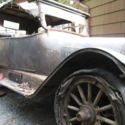 1916 OLDSMOBILE BIG 7 PASSENGER V8 TOURING CAR FAMILY BARN FIND
1916 OLDSMOBILE BIG 7 PASSENGER V8 TOURING CAR FAMILY BARN FIND
Mileage: 26457
 1926 Cadillac 2 passenger opera coupe golf club door. Very rare barn find.
1926 Cadillac 2 passenger opera coupe golf club door. Very rare barn find.
Mileage: 86,274
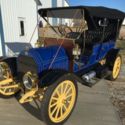 1911 Elmore 25 Brass Touring Car Clyde Ohio General Motors Two-cycle Engine
1911 Elmore 25 Brass Touring Car Clyde Ohio General Motors Two-cycle Engine
Mileage: 5
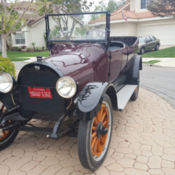 1916 Reo 7 Passenger Touring Car
1916 Reo 7 Passenger Touring Car
Mileage: 5,000
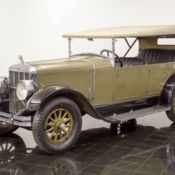 1927 Franklin Five Passenger Touring
1927 Franklin Five Passenger Touring
Mileage: 56,339
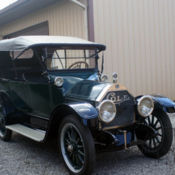 1914 Cole Model 9-4 G 5 Passenger Touring -
1914 Cole Model 9-4 G 5 Passenger Touring -
Mileage: 80,000
 1923 Maxwell Model 25 Five-Passenger Touring Car
1923 Maxwell Model 25 Five-Passenger Touring Car
Mileage: 18,739
 1941 CROSLEY CONVERTIBLE BARN FIND
1941 CROSLEY CONVERTIBLE BARN FIND
Mileage: 100,000
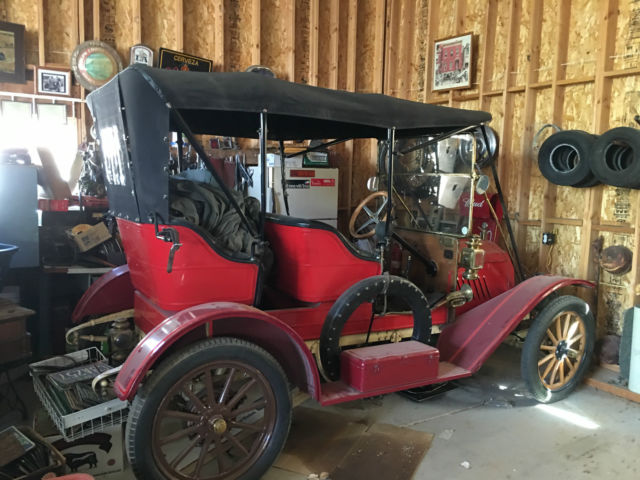
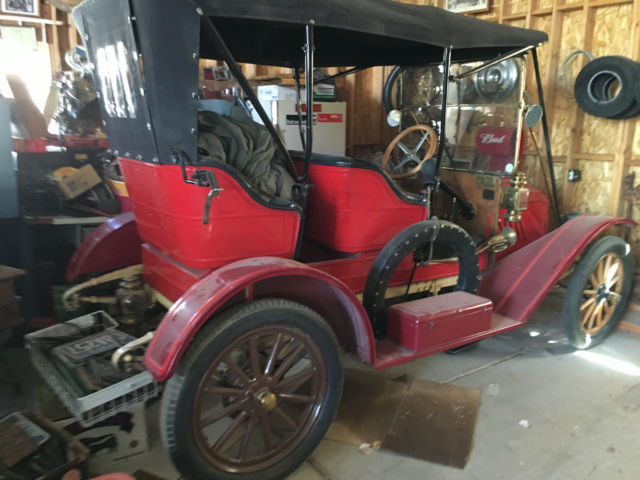
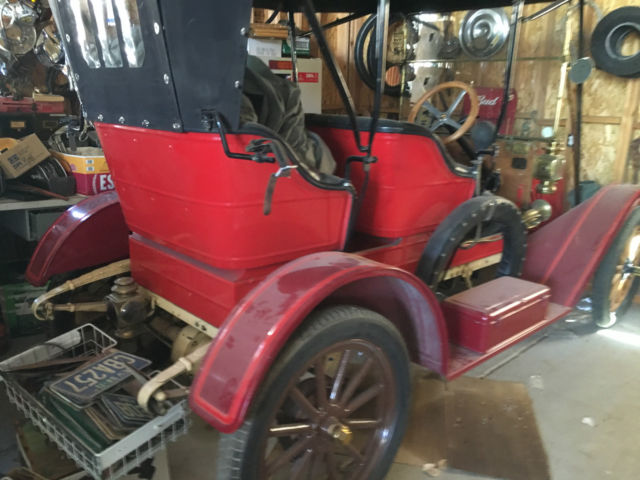
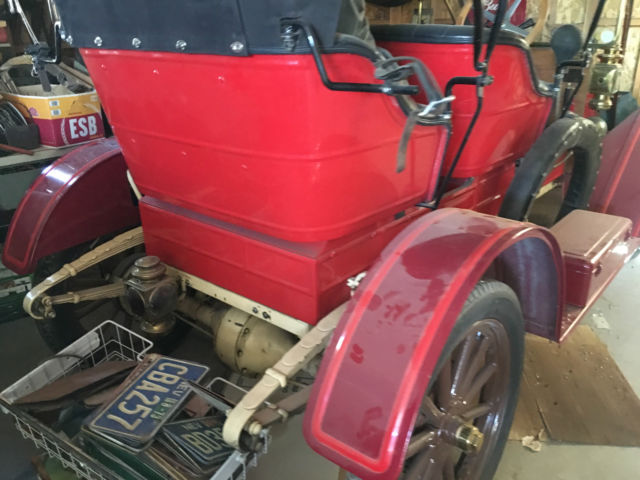
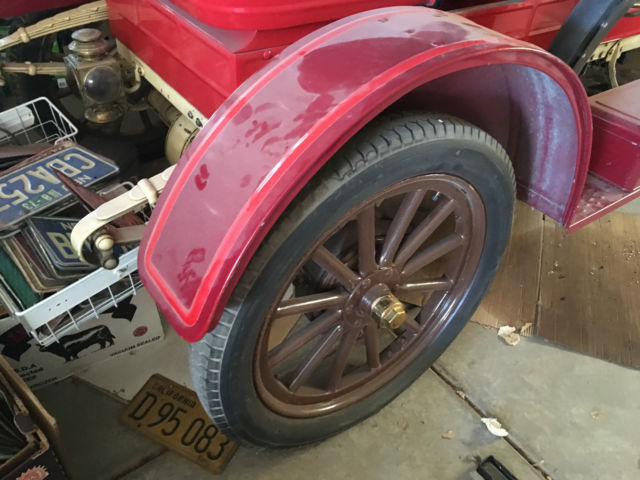
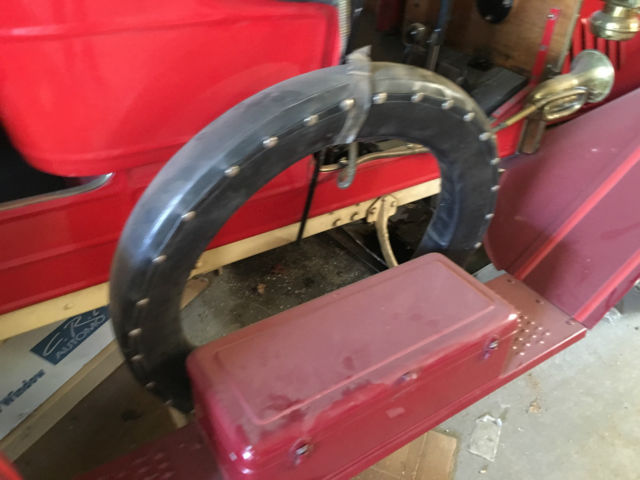


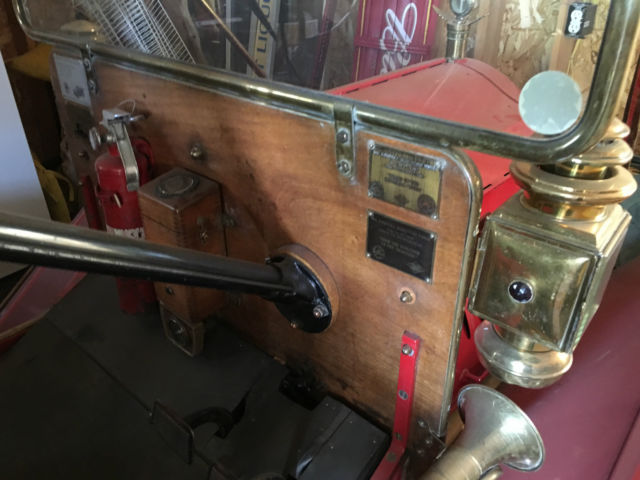

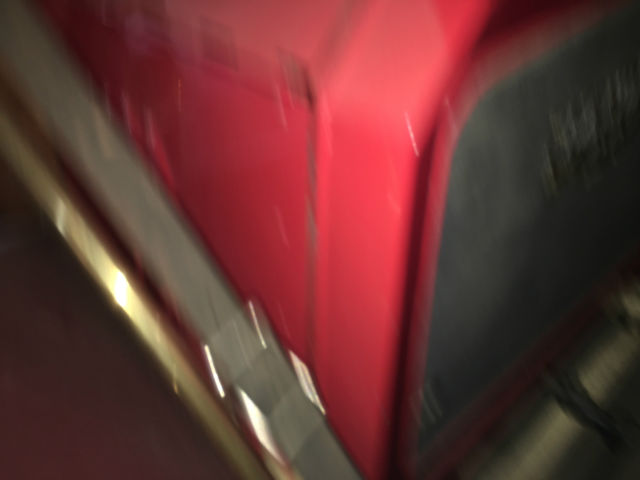
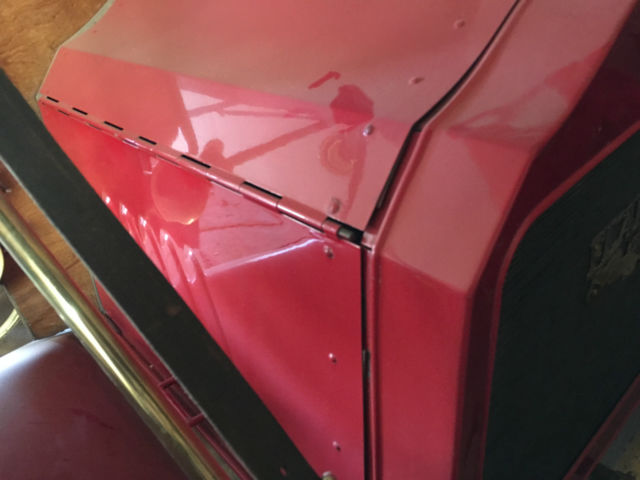

 1920 Ford Model Tee 5 Passenger Touring Sedan
1920 Ford Model Tee 5 Passenger Touring Sedan
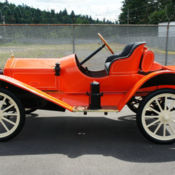 1913 METZ RUNABOUT 2 PASSENGER ROADSTER, 4 CYLINDER, STARTS, STOPS, RUNS & DRIVE
1913 METZ RUNABOUT 2 PASSENGER ROADSTER, 4 CYLINDER, STARTS, STOPS, RUNS & DRIVE